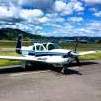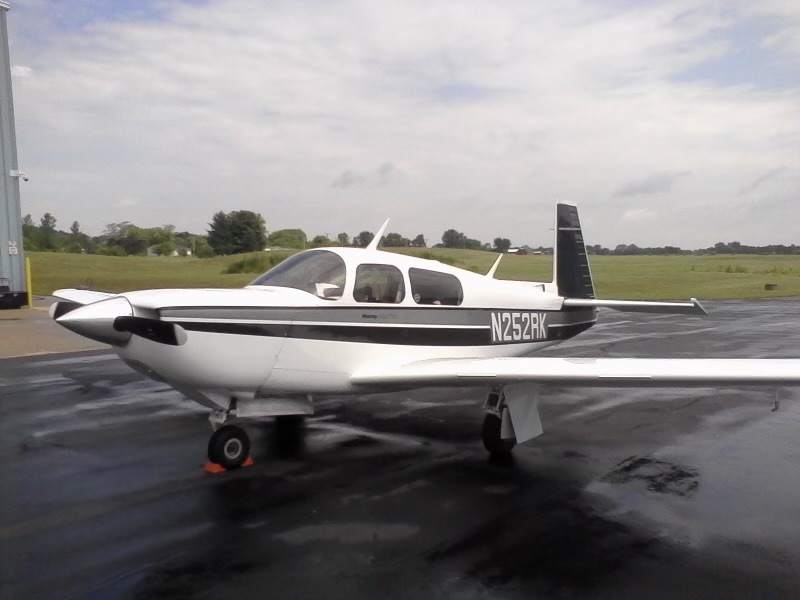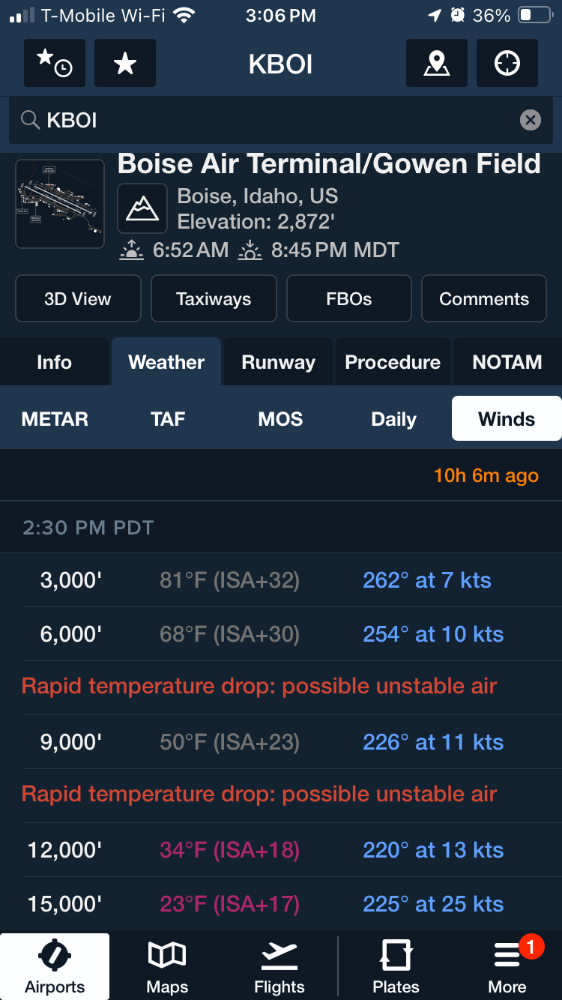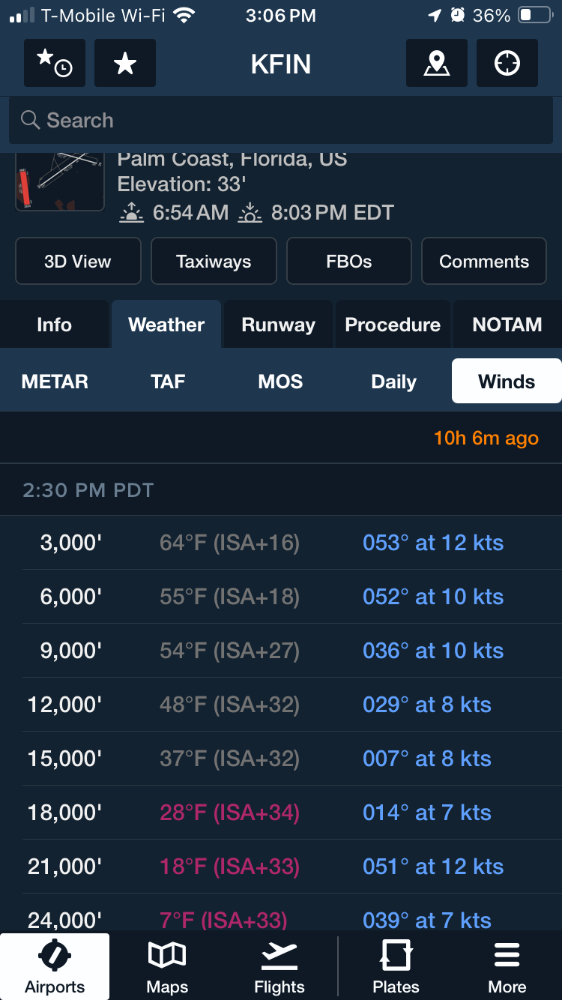-
Posts
5,677 -
Joined
-
Last visited
-
Days Won
28
Content Type
Profiles
Forums
Blogs
Gallery
Downloads
Media Demo
Events
Everything posted by Ragsf15e
-

Instrument Approach Gear and Flap Sequence - A survey
Ragsf15e replied to midlifeflyer's topic in General Mooney Talk
Yep. I don’t think configuring at the faf is a good idea. I’ve seen people do what you describe and it works fine, but I don’t like adding things at the faf that aren’t necessary. Final configuration done and checked prior, airplane all trimmed and on speed prior. That’s how i do it. -
Lasar shows the real ones in stock now. Fit right out of the package. https://lasar.com/interior-hardware/seat-roller-140004-000
-

Pre-J Mooney Jump Start Procedure
Ragsf15e replied to Mooney-Shiner's topic in Vintage Mooneys (pre-J models)
Isn’t there a fuse on the battery minder wiring since it’s normally low current anyway? I thought my minder connection had a pretty low amp fuse but possibly im wrong? -

Instrument Approach Gear and Flap Sequence - A survey
Ragsf15e replied to midlifeflyer's topic in General Mooney Talk
Ha! Ill be first, but ill be different too… gear and approach flaps prior to the FAF. Ill use them to help reduce my speed to my fas speed, but my goal is to be trimmed, on speed, and basically just hands off into the FAF, then there’s just the 6 Ts to do as required. Pulling the power allows descent without retrimming if you were already on speed. I don’t like to add a configuration change at the GS intercept as well. Not only the configuration change, but confirming gear down, retrimming, and 6Ts at the FAF is a lot. We taught in the USAF to be configured, trimmed, etc 1-2 nm prior to the faf. In the Mooney i use closer to .5-1.5nm prior. -
Just to be clear… Stall with the ball centered, power on or power off, maybe a little roll but controllable with coordinated inputs. Probably a bit more noticeable with power on, highly recommend doing ~60%. They are worth doing, as departure stalls kill. Stall without the ball centered gets much more interesting. Especially with a high power setting. You may quickly find yourself in a very steep bank, very nose low, feels like inverted. By the time you level the wings (and hopefully pulled power), you might be well above maneuvering speed, so pull carefully. Obviously we’re not going to try to spin or anything, but seeing it stall uncoordinated once or twice with an instructor might be worthwhile to convince us that coordination is really important!
-
http://www.csgnetwork.com/tasgpscalc.html
-
Couple things… The displayed GS is precise. The displayed TAS is only as good as your CAS, temp, altimeter setting, etc. is your G5 using CAS or IAS? How good is your displayed airspeed? You must do a good 3 way groundspeed test to and enter the GS values in a computer to know for sure. I find that my IAS is about 3kts fast. Now, why are you “always into a headwind”? Well first, it’s actually true that you’ll see more hw component than tw because you always have to turn into the wind to maintain your course (not to be confused with heading). So of the 360 degrees of possible wind angles, more than half result in a headwind. Second, if your IAS is a couple knots fast (as I suspect), you’ll find that the correctly displayed GS vs incorrect TAS will show that you have a HW even if you don’t.
-
I agree about the temp making a big difference, but i think it’s pretty similar in the summer. Of course it depends on exactly where you are, but summer temps aloft are relatively similar. The winter ones have much more delta. Maybe the turbo guys can get up high and take advantage of cooler temps even in summer? Just to pick an example, here’s Boise, Idaho vs Palm Coast, Florida:
-
I run this same profile as you in my very similar’68F model a lot, so I think ill get close, but your CG and weight will matter a lot! I commonly do a 4 hour xc with kids, wife, baggage, etc and we take off close to mgw. Over 4 hours, we burn ~36 gallons (220lbs) of fuel and the airplane is noticeably faster (maybe 3 knots). So let’s say I level off at mgw, LOP (for me, at 65%, that’s barely lop, maybe 5-10 degrees past peak). 8.6 ff seems a little low but will depend on temp too. Id see about 139 knots tas. By the end of the flight, I’d see 142. Rop, id see 4 knots faster. Same prop, lasar cowl, 201 windscreen, mid time engine, surefly mag (which did improve lop power). Id bet your E should beat me by ~3 kts just based on its lower mgw.
-
When did you send it to them originally?
-

231 crash on takeoff at 47N
Ragsf15e replied to Brandt's topic in Mooney Safety & Accident Discussion
Ahh, my post wasn’t clear, mine was the leads as well. Yeah, that doesn’t feel good after finding it. Scary. -

231 crash on takeoff at 47N
Ragsf15e replied to Brandt's topic in Mooney Safety & Accident Discussion
This is related/unrelated, but one annual i had the left side of my engine, all the plugs only finger tight. Mechanic set them there and got distracted as he was going back with a wrench (I believe it doesn’t require much, but apparently a little tighter is important). Anyway, 2 or 3 flights later I started getting lots of radio noise/interference. It sent me down a lot of rabbit holes, but the engine was running great. One of the rabbit holes was to check the harness and we determined that the plugs (all 4 on the left) were barely attached to the harness. Yikes. -
FF lets me put it on 3 devices. I have my charts on ipad, but also load them on my phone (and another) as a backup.
-
Dan, that’s almost my exact same planning trip! My kids are 8 (twins), getting big, and my parents live in Carson City Nevada (525nm). It sounds like an ovation would be perfect. Did you also find yours through a broker? thanks for your time, Drew
-

After a 2 minute taxi for fuel, my F wouldn’t start
Ragsf15e replied to gwav8or's topic in Vintage Mooneys (pre-J models)
Besides technique (which it sounds like you have already mastered), the ignition system is the next key. Specifically your sos, left mag, harness & plugs. If that isn’t well sorted, no technique will work. Do you hear the sos rattle when you turn to start (before pushing the key)? -
I’m not sure about the stec-55, but the OP (and I) have an stec-30, so no flight director. The G5(s) or gi275(s) just provide heading and gpss, nothing else. Either would be good.
-
The stec works with any adi as it’s rate based, so the g5s would be fine (but i bet you know that). There’s more panel cutting with the g5s though, so maybe gi275 makes sense? My thought is if you’re doing the hsi, do both! You could also likely remove your vacuum system and get more UL. @bigmoIf you decide to go with stec 901 gpss, pm me with an offer. I have a used one i removed when i installed dual g5s for my stec.
-

Diff between Garmin and Jeppessen Maps
Ragsf15e replied to McMooney's topic in Avionics/Panel Discussion
Maybe it’s different for different units or packages, but I’ve found that Garmin is cheaper for an entire North American nav database for my 430w. -
Very helpful, thanks! 1100lbs is an incredible UL considering how efficient these airplanes are. Thats a lot of stuff hauled a long way!
-
@NickG @Buckster @NewMoon First off, congrats to you 3 for the new Ovations! I’m glad to hear you’re enjoying them so much! I’m getting the itch to move up from my F, but I’m concerned about useful load. Based on my normal “mission”, I need a UL around 1050lbs to get my ~60 gallons of fuel and ~660lbs of family/bags. Did you guys find Ovations with ~1050 or is that a pipe dream? I don’t travel much in winter, so tks isn’t required. Secondly, how did you go about your search? Broker? Thanks very much! Drew
-
You’re probably going to have to pull a few belly panels, however, my master cylinder for the brakes is under my brake pedals. If the flaps are hydraulic, the lines go back below the copilot seat to the actuator. It’s either the brakes or flaps. Both run off the same reservoir.
-

After a 2 minute taxi for fuel, my F wouldn’t start
Ragsf15e replied to gwav8or's topic in Vintage Mooneys (pre-J models)
I think @Shadrach could be right. Usually, if you crank it after say taxiing to fuel, it will fire at least through a few blades, even if it doesn’t start running. If it won’t fire at all, you may have something not perfect in your ignition system. -

After a 2 minute taxi for fuel, my F wouldn’t start
Ragsf15e replied to gwav8or's topic in Vintage Mooneys (pre-J models)
We’ve all probably done it at least once early in our ownership. It happens. Once you get a good technique, it won’t be an issue. After a short taxi, don’t prime. It should start right away. I think about it as 3 possible starting points. You can move yourself down the list, but not up: 1. Normal, cold, hasn’t been run in several hours. 2. Hot engine or has at least run in the last few hours. 3. Flooded (goal is not to get here, but occasionally you could end up here and should have a good technique to start it without lighting it on fire). Again, you can move down the list, but not up (well actually if you try a hot start after it sat a long time and it doesn’t work, maybe you’re back at #1, so prime it without flooding). If you need help with the technique for any of those three conditions, let us know.






